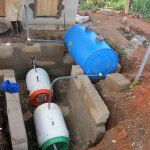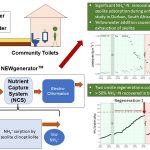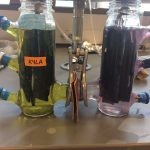Global Wastewater Treatment and Sanitation
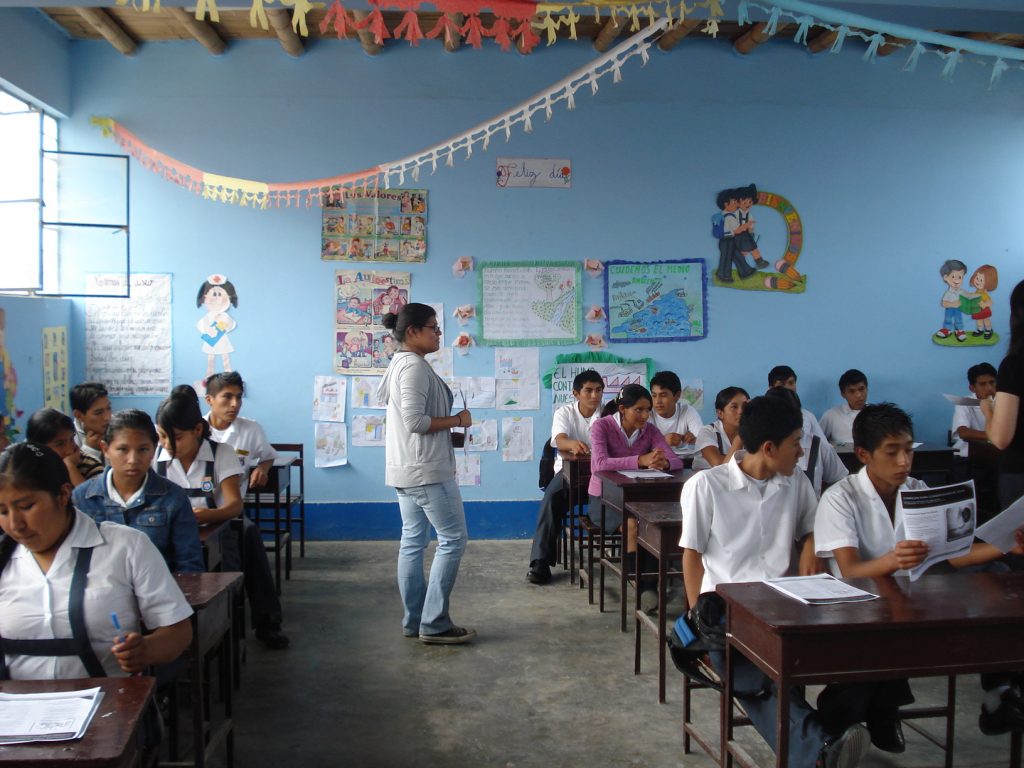
in 2010, a team of engineers associated with the Projects for Underserved Communities from UT Austin, implemented a water conservation plan for a rural school, Colegio Carlos Noriega, in Santa Cruz, Peru that had intermittent water availability. Our team implemented water conservation efforts by replacing toilets and faucets with high-efficiency toilets and automatic faucets to lower the water consumption. Additionally, a drip irrigation system was installed for a community garden. Lastly, a water conservation short-course was given to each class, with the age of children ranging from 4-18 yrs old, over a week long period.
As part of a collaboration between UMass Amherst, ASU, and the Bill and Melinda Gates foundation Reinvent the Toilet Challenge, our research team developed the “Green Latrine,” a microbial fuel cell (MFC) back-end technology to passively treat the liquid portion of blackwater from a composting latrine. The Green Latrine was field-tested in Agona Nyakrom, Ghana and required no power consumption or moving parts. The MFC was able to generate a small amount of electricity to light the interior of the latrine. After a two years of use, the system was able to also generate compost.


in 2018, a non-sewered sanitation system called the NEWgenerator, was deployed and installed at an informal community in Durban, South Africa. This system was developed at USF with funding from the Bill and Melinda Gates Foundation Reinvent the Toilet Challenge. It consists of an anaerobic membrane bioreactor (AnMBR), a nutrient capture system, and a chlorinator. The system is still operating and being field-tested to assess its feasibility as a non-potable water reuse technology.
Sustainable Nutrients Management
Nutrients management systems exist for large-scale plants that operate to treat municipal wastewater. Unlike municipal wastewater, blackwater, water generated from toilets, is almost 10 times more concentrated and requires innovative techniques to meet discharge requirements. My work has consisted in developing sustainable methods to manage nitrogen from blackwater, mainly in the form of ammonium or nitrate, and phosphorus.
The Green Latrine used a three chamber bioelectrochemical system that oxidized organic compounds from blackwater in the anode chamber while simultaneously operating a nitrification chamber for ammonium transformation to nitrate from male urine. Nitrate was used as the electron acceptor in a cathode chamber to close the loop of the fuel cell. Nitrification was passively accomplished using a downward trickling flow. The tank was also placed partially underground to induce thermal mixing due to temperature gradients.

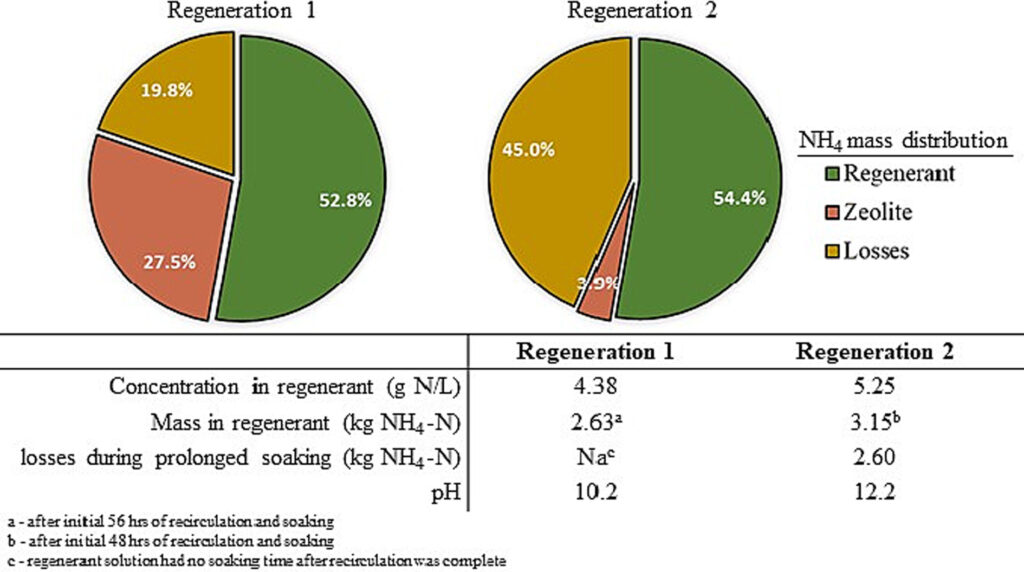
Another treatment method for decentralized treatment systems is using zeolite as an ammonium sink. Zeolite regeneration is possible but field-studies on the regeneration process is limited. Our field study in Durban, South Africa focused on determining operating procedures for regenerating zeolite on site using materials that can be found anywhere in the world (NaCl). Our work has shown that zeolite can be regenerated in such a way to reduce the brine production and nearly 50% of the original ammonium sorbed to zeolite can be recaptured in the brine solution.
We are currently working on a high-rate struvite precipitation system for nitrogen & phosphorus recovery as a precipitant from high strength wastewater. We are also developing strategies for physical sorption of nitrogen and phosphorus from blackwater, which tend to have high concentrations of both nutrients than domestic wastewater. Stay tuned for more information on these project!
Bioelectrochemical Systems
Most recently we evaluated the operational parameters that affect the nitrate removal of two-chambered microbial fuel cells (MFCs) with a biocathode, particularly, the carbon to nitrogen ratio (C:N) and proton diffusivity across electrode chambers. The results show that proton diffusion across a proton exchange membrane is not a limiting step in nitrogen removal performance. At C:N ratios of 4 and 8, biocathodes with a continuously supplied carbon source at the anode were able to achieve complete nitrogen removal. This indicates that higher C:N ratios than have been previously explored (>4 C:N) provide sufficient coulombs to facilitate denitrification at the cathode even while the anodic CEs remain low.
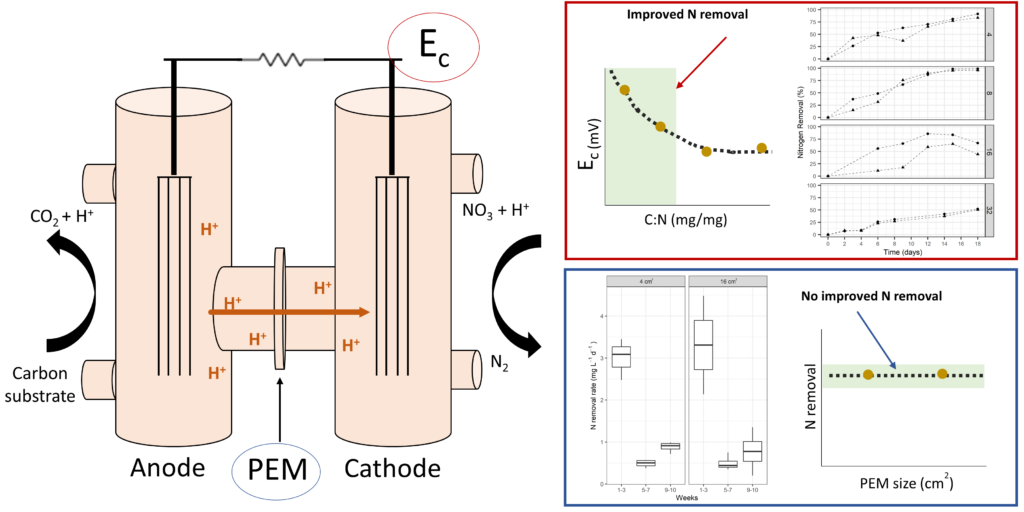
When scaling-up MFCs to operate under real environmental conditions, microbial competition occurs in the anode due to the diversity of microorganisms able to utilize carbon sources under anaerobic conditions. Our work has shown that in large-scale anodes that utilize granular carbon electrodes, which is typically used to increase surface area for exoelectrogenic activity, methanogenesis is difficult to prevent. This is due to direct interspecies electron transfer (DIET) between methanogens and known exoelectrogens in the presence of conductive surfaces. Co-evolution of methane and electricity, albeit at smaller quantities, is possible for dual-energy production.


One method to overcome methane production is to provide an external load to inhibit methanogenesis and favor anode-respiring bacterial activity. Part of my PhD work concluded that for controlled system where little changes to the anode environment will occur, low external resistances can yield high current densities. For applications where the anode environment will be exposed to fluctuations of electron competitors or other metabolic inhibitors, such as nitrate which is a natural methanogenesis inhibitor, higher external resistance may yield more consistent electrochemical performance.
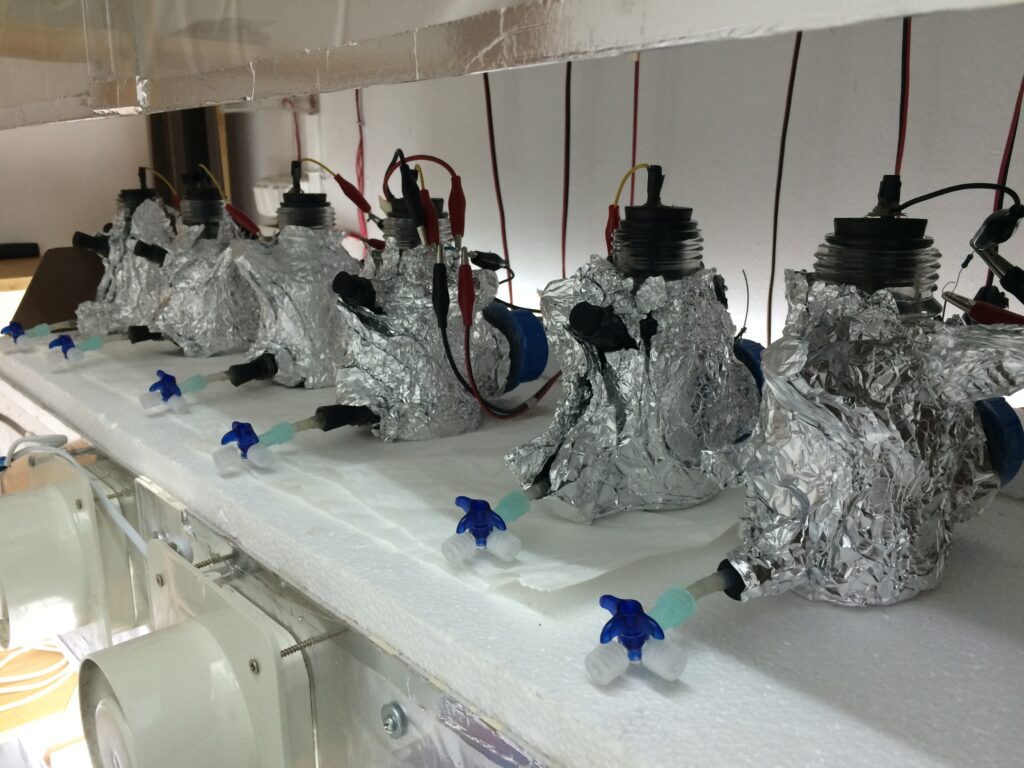
As a visiting researcher at Pontificia Universidad Catolica in Santiago, Chile, I worked on understanding whether bioaugmentation of anode biofilms with microbes from extreme environments could improve power production under stressed environments. The effects of pH and conductivity on complex carbohydrate degradation using anode respiring bacteria enriched with Andean soils from acid mine drainage was assessed. Our results showed that augmenting cultures from municipal wastewater with those from extreme environments were able to show improvements in power generation when operated under high pH and conductivities.

